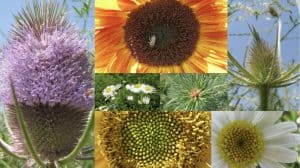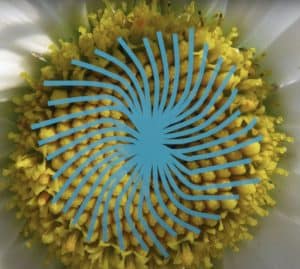The Math in Nature Video Series is an excellent tool for connecting math and the world around us. We hope this also makes walks in nature both intriguing and entertaining once you see all the examples of math around you in your environment.
Each video explores a different topic and provides examples of math being discovered in nature. Most of the videos also include activities like drawing spirals or blowing bubbles that a student can complete in or near their home.
- Part 1: Symmetry in Nature
- Part 1 explores different types of symmetry and where they can be found in nature. Viewers are encouraged to use a mirror to find the line of symmetry on different plants and see if these plants are symmetrical.
- Part 2: Spirals in Nature
- Part 2 looks at spirals in nature. The video explains two different types of spirals as well as the Coriolis Effect. The activities are looking at spirals on plants and using a turntable to show how winds bend around the Earth.
- Part 3: Fibonacci Numbers in Nature
- Part 3 delves into Fibonacci numbers and where they appear in nature. Students can count the spirals or petals on different plants and see whether or not they find a Fibonacci number.
- Part 4: Lucas and Fibonacci Numbers in Nature
- Part 4 explains Fibonacci numbers in greater detail but also introduces Lucas numbers and phi. Relationships between Fibonacci and Lucas numbers, as well as Fibonacci number’s relation to phi is explained. Viewers are encouraged to look at different plants and see if the number of spirals or petals on these plants matches one of the numbers in the series, and they are encouraged to draw their plant spirals.
- Part 5: Phi in Nature
- Part 5 describes phi and its relation to the golden ratio and golden spiral. The video explains the formula for the golden ratio and where the ratio can be found in nature.
- Part 6: Concentric Circles and Tessellations in Nature
- Part 6 explores concentric circles and tessellations in nature. Students can draw concentric circles as an activity.
- Part 7: Hexagons in Nature
- Part 7 investigates hexagons and why and where they appear in nature. Students can experiment with bubbles and see how a bubble uses the least material to cover a surface to improve understanding. The video explains some surface tension and air mass physics to force a bubble into a specific shape.
- Part 8: Fractals and Meanders in Nature
- Part 8 looks at fractals and meanders in nature. Self-similarity and algorithms are explained, and it is suggested that viewers draw their fractals and find different fractals and meanders in the world around them.









